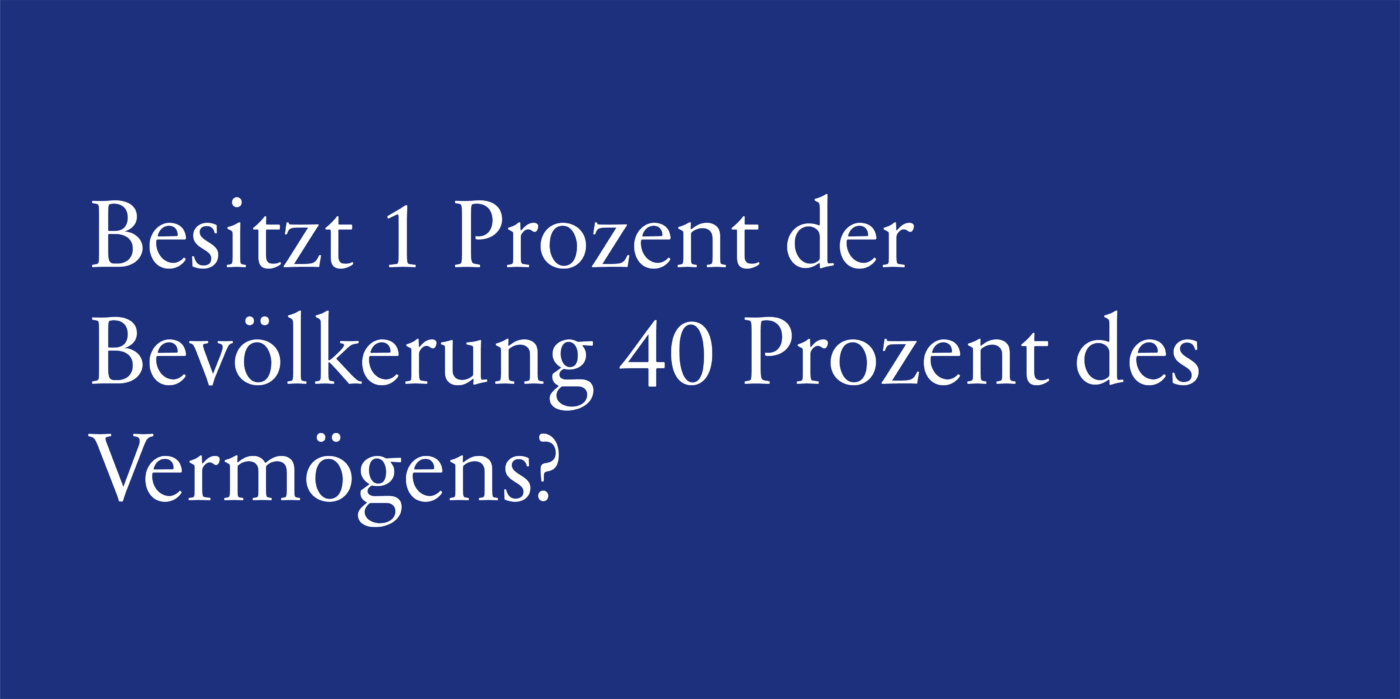Literatur

- 17.10.2017
- Lesezeit ca. 1 min
Eine kritische Zusammenfassung der AK-Studie „Bestände und Konzentration privater Vermögen in Österreich"
- Eckerstorfer, P., Halak, J., Kapeller, J., Schütz, B., Springholz, F. und Wildauer, R., 2016. Correcting for the missing rich: An application to wealth survey data. Review of Income and Wealth, 62(4), pp. 605-627.
- Eckerstorfer, P., Halak, J., Kapeller, J., Schutz, B. und Wildauer, R., 2013. Bestände und Verteilung der Vermögen in Österreich. Materialien zu Wirtschaft und Gesellschaft, 122, pp. 1-49.
- Fessler, P. und Schürz, M. Private wealth across European countries: the role of income, inheritance and the welfare state. ECB Working Paper no 1847, September 2015.
- Ferschli, B., Kapeller, J., Schutz, B., und Wildauer, R., 2017. Bestände und Verteilung der Vermögen in Österreich. Materialien zu Wirtschaft und Gesellschaft, 167, pp.1-52.
- Guttmann, R. und Plihon, D., 2010. Consumer debt and financial fragility. International Review of Applied Economics, 24(3), pp.269-283.
- Little, R.J. und Rubin, D.B., 2002. Bayes and multiple imputation. Statistical Analysis with Missing Data, Second Edition, pp.200-220.
- Piketty, T., 2014. Capital in the twenty-first century. Cambridge, Massachusetts. Harvard University Press.
- Stiglitz, J.E., 2012. The price of inequality: How today’s divided society endangers our future. New York City, New York. WW Norton & Company.
- Vermeulen, P., 2017. How fat is the top tail of the wealth distribution?. Review of Income and Wealth.
Mehr interessante Themen
Sozialer Wohnbau: Das Vermögen der (gar nicht so) kleinen Leute
Auch wenn es niemand glauben mag: Wohnen in Österreich ist vergleichsweise günstig. Die Wohnkostenbelastung der Haushalte beträgt im Schnitt rund 19 Prozent des verfügbaren Einkommens. Damit liegen wir im EU-Vergleich im Mittelfeld. Mieterhaushalte zahlen natürlich mehr als Eigentümer, aber mehr als drei Viertel von ihnen profitieren hierzula
Bildungskarenz: Ich bin dann mal weg!
Die Bildungskarenz war eine gute Idee, erfüllt aber nicht die von der Politik gesetzten Ziele – und wird immer teurer. An einer grundlegenden Reform führt kein Weg vorbei.
Die Schuldenbombe tickt: Wird Österreich das neue Italien?
Mehr als ein Jahrzehnt lang konnten sich Staaten kostenlos verschulden, die Zinsen lagen praktisch bei null. Damit sollten den Staaten Zeit erkauft werden, sich nach der Finanzkrise zu modernisieren. Statt diese Zeit aber für Reformen zu nutzen, wurde das vermeintliche Gratisgeld mit beiden Händen ausgegeben. Österreich muss seinen Ausgabenrausc
Was die Preise in Österreich so aufbläht
Die Inflation in Österreich hält sich hartnäckig. Fast acht Prozent waren es im Jahr 2023. Für das Jahr 2024 werden vier Prozent vorhergesagt. Während viele andere Länder schon aufatmen können, ist die Inflationskrise für uns also noch nicht vorbei. Warum tut sich gerade Österreich so schwer? Wir prüfen drei Thesen.
Balken, Torten, Kurven Zweitausenddreiundzwanzig
Die Zeit der Lockdowns und Ausgangssperren war vorbei, die Wirtschaft zeigte sich nach den verheerenden Corona-Jahren in bester Laune, nur die hohe Teuerung hat uns die gute Stimmung verdorben (vom Finanzminister einmal abgesehen – der freute sich).
E-Government: „Hobn’S kan Ausweis?“
Die öffentliche Verwaltung soll digitalisiert werden. Das verspricht die Politik seit Jahren. Diverse Angebote gibt es bereits, doch der große Durchbruch wollte bisher nicht gelingen. Das liegt nicht nur an der Regierung. Auch die Bürger müssten, im eigenen Interesse, etwas mehr Bereitschaft zur Veränderung aufbringen.





